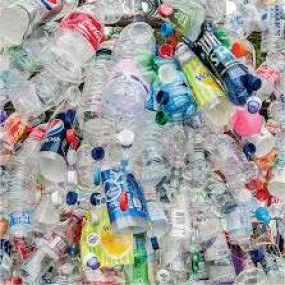TABLE
OF CONTENTS
CHAPTER ONE
1.0 INTRODUCTION
1.2 BACKGROUND
OF THE STUDY
1.3 RATIONALES
OF PROJECT
1.4 AIM
AND OBJECTIVE
1.4.1 OBJECTIVES
AIM
1.4.2 Aim
Reference
CHAPTER TWO
2.0 LITERATURE REVIEW
2.1 WORKING
OF WASTE TYPE PYROLYSIS PLANT
2.2 Pyrolysis
Product
2.3 Nature
of the pyrolysis products
2.4 Characteristics
and uses of pyrolysis products.
2.4.1 Gas
2.4.3 Liquid
2.4.3 Solid
2.4.3.1UTILIZATION OF THE RESIDUE AS
STRENGTHENING
2.5 VALORIZATION OF THE PYROLYSIS PRODUCT
REFERENCES
CHAPTER THREE
3.0 TIRE
3.1 TIRE
RECYCLING
3.2 TIRE
LIFE CYCLE
3.3 LANDFILL
DISPOSAL
3.4 USES
OF TIRE
3.5
TIRE PYROLYSIS
3.6 METHOD
OF RECYCLING OF USED TIRES
3.6.1 RETREADING
METHOD
3.6.2 MECHANICAL
METHOD
3.6.3 RECLAIMING
RAW MATERIALS METHOD
REFERENCES:
CHAPTER FOUR
4.0 MATERIALS AND METHODS
4.1
MATERIALS AND ENERGY BALANCES
4.2 REACTOR
DESIGN
4.2.1 EFFECTS
OF MASS TRANSFER
4.2.2 EFFECT
OF HEAT TRANSFER
4.2.3 Design
Basis
4.2.4 Design
Parameters
4.3 MECHANICAL
DESIGNS
4.3.1
MATERIALS OF CONSTRUCTION
4.3.2
DESIGN PRESSURE
4.3.3
DESIGN TEMPERATURE
4.3.4 DESIGN LOADS
4.3.5
SUPPORTS
4.4
DESIGN SUMMARY
4.5 Construction
and installation
REFERENCES:
CHAPTER FIVE
5.0 CONCLUSION
5.1 Advantages
of pyrolysis Plant
5.2 BENEFIT
OF PYROLYSIS PLANT
5.3 GENERAL
CONCLUSION AND RECOMMENDATION
5.3.1 General
Conclusion
5.3.2 RECOMMENDATION
REFERENCES
CHAPTER
ONE
1.0 INTRODUCTION
The
pyrolysis organic high grade waste appeared like a more and more attractive way
of solve the proliferation of these waste, especially during 1970-75 years.
Pyrolysis
is the transformation of chemical compounds by heat without intervention of
secondary reagents, (like oxygen). The chemical reactions are complex and
transformed the waste into there fractions: solid, liquid, and cias
The
pyrolysis method for recycling used tyros is a techniques, which heats whole or
shredded rubber 13 softened after which the rubber polymers continuously
breakdown into smaller molecules, these small molecules eventually vaporize and
exit from the reactor. These vapors can be burned directly to produce power or
condensed into an only type liquid, general used as fuel. Some molecules are
too small to condense and they remain as solid. When performed well a tyre
pyrolysis process is a very clean operation and has nearly no emission or
waste. The properties of the gas, liquid and output are determined the type of
feed stock used and the process conditions. For instance, whole types contain
fibred and street. Slurred tyros have most of the steel and sometimes most of
the fiber removed. The steel can be removed from the solid stream with magnets
from recycling. The remaining solid materials often referred to as “charcoal”
Pyrolysis
can be performed at relatively small scale and at remove locations which
enhance energy density of the biomass resource and reduce transport and
handling costs. Heat transfer is a critical area in pyrolysis as the pyrolysis
process is endothermic and sufficient heat transfer surface has to be provided
to meet process heat needs. Pyrolysis offer a flexible and attractive way of
converting solid biomass into on easily stored and transported liquid, which can
be successfully used for the production of heat, power and chemicals.
1.2 BACKGROUND OF THE STUDY
Pyrolysis
is the chemical decomposition of a condensed substance by heating in the
absence of oxygen, and it is most commonly used for organic materials, called
biomasses it occurs at various high temperatures for different kinds of
biomasses. In shorts terms, pyrolysis used organic material and makes it into
usable energy by heating at high temperature without oxygen.
Pyrolysis
of biomasses results in blowhard and bio-oil. These are both usable energy
sources they can be used as safe, environmental friendly fuel option. Pyrolysis
also provides opportunity for the process of agriculture residence, wood waste
and municipal solid waste into clean energy pyrolysis is often used in the
chemical industry. It is used for example, to provide charcoal and activated
carbon to turn waste into safety disposable substance, and to produce gasoline
from hydrocarbon

1.3 RATIONALE OF PROJECT
The
rationale for undertaking this project is listed below:
100
% wastage rubber / type recycling is achieved (no waste left after the
process).
v No
soil, water or air pollution (pollution free) is observed during and after the
process
v Economically
valuable products are produced out of waste type (fuel oil, carbon black and
steel).
v Raw
material (waste type) is cheap to collect.
v Each
recycled line of tyre preserve it tones of C02, which is a major green house
gas.
v The
process can be applied to all rubber based material.
v The
system creates an alternate source of energy to replace petroleum product and
natural gas.
v Provides
opportunity government and local administration to deal with the disposal of
waste tyre.
v Social
benefit like the creation of employment and a healthier environment to live in.
v It
is a worldwide used technology in countries like India, china, Australia, and
USA.
The table below shows the waste
hierarchy in of environment preference, with waste disposal been that worst
solution. This, waste recycling is found to be more preferred environmental
option than land filling.

1.4 AIM AND OBJECTIVE
1.4.1 OBJECTIVES
AIM
The
main objective of this project is to reduce the level of stress to the sole
sanitary landfill of Nigeria which has a diminishing life time and also to
reduce the amount of non-biodegradable waste ending in the natural environment
untreated.
- Development
of pyrolysis process in a modified environment able to enhance thermal
degradation of biomass (steam pyrolysis)
- Development
of a hybrid multifunctional catalyst that would produce deoxygenated liquid
product.
1.4.2 Aim
The
specific aims of the project are:
- To reduce hazards related to the increased
disposal of type waste.
- To convert
waste tyros into useful products in an environmental friendly manner.
- To produce
fuel oil, carbon black, steel and gas (which is re-used in the process).
Click “DOWNLOAD NOW” below to get the complete Projects
FOR QUICK HELP CHAT WITH US NOW!
+(234) 0814 780 1594
Buyers has the right to create
dispute within seven (7) days of purchase for 100% refund request when
you experience issue with the file received.
Dispute can only be created when
you receive a corrupt file, a wrong file or irregularities in the table of
contents and content of the file you received.
ProjectShelve.com shall either
provide the appropriate file within 48hrs or
send refund excluding your bank transaction charges. Term and
Conditions are applied.
Buyers are expected to confirm
that the material you are paying for is available on our website
ProjectShelve.com and you have selected the right material, you have also gone
through the preliminary pages and it interests you before payment. DO NOT MAKE
BANK PAYMENT IF YOUR TOPIC IS NOT ON THE WEBSITE.
In case of payment for a
material not available on ProjectShelve.com, the management of
ProjectShelve.com has the right to keep your money until you send a topic that
is available on our website within 48 hours.
You cannot change topic after
receiving material of the topic you ordered and paid for.
![Business Plan]() Business Plan 19
Business Plan 19
![Case study]() Case study 0
Case study 0
![Feasibility Study]() Feasibility Study 44
Feasibility Study 44
![Software License]() Software License 6
Software License 6
![Training Manual]() Training Manual 2
Training Manual 2






























Login To Comment